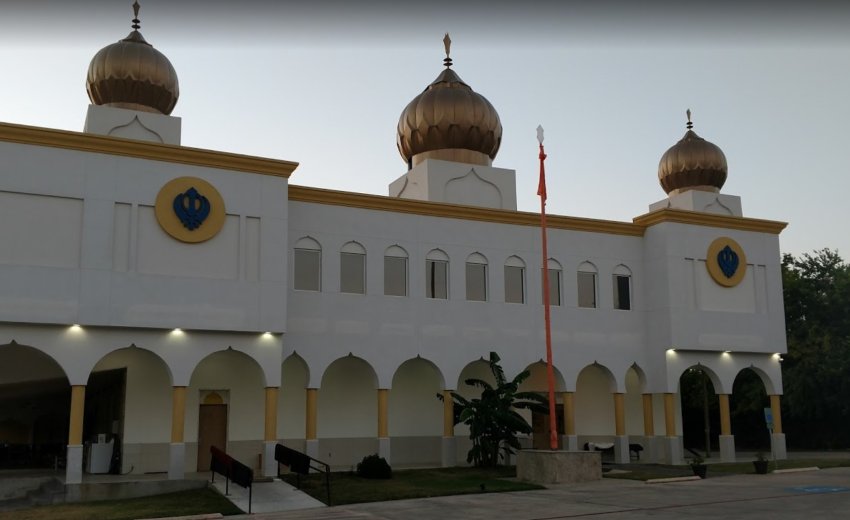Sikhs in San Antonio: History, Challenges, and Community Growth
Encountering a Sikh in San Antonio is relatively uncommon, with only about one in 1,400 people being Sikh.
Encountering a Sikh in San Antonio is relatively uncommon, with only about one in 1,400 people being Sikh. However, if you have seen Sikhs, you've likely noticed their distinctive appearance: long hair, long beards, and turbans, which are all symbols of their religious commitment. In fact, 99% of turban-wearers in the United States are Sikhs. Despite Sikhs being part of the Texas community since 1909 and the broader American landscape since the 1800s, many people are unfamiliar with the Sikh religion.
Sikhism is a monotheistic faith that emerged in the Punjab region of India and Pakistan during the 1400s. Sikhs believe that life's purpose is to unite with the Divine through loving all creation, which is achieved by meditation, community service, and living honestly. Many Sikhs find practicing their faith in the U.S. straightforward due to the similar values between Sikh and American cultures. It's often said that Sikh values align closely with American values, as both emphasize equality for all, religious freedom, and social justice. Currently, there are approximately 700,000 Sikhs in the U.S. and 25 million worldwide, making Sikhism the fifth-largest independent religion globally.
Sikhs migrating to America
Sikhs have been part of American society for over 130 years. Their journey to the United States began in the 1800s, with most coming from Punjab, India. Like many immigrants, they were drawn by the promise of a better life in America. At that time, Punjab was suffering under British rule. Extreme exploitation led to severe famines and widespread poverty among farmers. To help their families survive, many Sikh households sent their youngest sons abroad to find work and send money home.
California, the Pacific Northwest, and New York became early hubs for Sikh immigrants. They found jobs in various industries, including lumber mills, farms, mines, and railroads.
Life wasn't easy for these newcomers. They faced significant challenges, including institutional racism, discriminatory laws, and even violence aimed at preventing them from settling permanently. Despite these obstacles, the Sikh community persevered. In 1912, they established their first gurdwara (Sikh place of worship) in Stockton, California. This gurdwara still serves the community today, more than a century later.
In 1918, new immigration quotas severely restricted Asian arrivals to the United States. Additionally, a law from 1790 requiring naturalized citizens to be racially "white" was revived. This led to a debate in the Supreme Court in 1923 about whether Punjabi Sikhs could be classified as "white”. Bhagat Singh Thind, a Sikh American World War I veteran, received citizenship in 1918. However, an Immigration & Naturalization Officer challenged his racial status, leading to the revocation of his citizenship. Thind's defence argued that Punjabi Sikhs were Aryans and therefore "white," but the court rejected this argument, declaring the Aryan theory unscientific and consequently classifying Punjabi Sikhs as non-white.
In 1924, legislation banned the immigration of anyone ineligible for naturalization. However, restrictions began to ease in 1946, and finally, in 1965, immigration reform opened the door to new Asian immigration. The first known Sikh in Texas was Bishen Singh, an herb importer living in Dallas by 1909. Most early Sikh arrivals, however, settled around El Paso and worked in agriculture or business. By 1920, many Sikh men had married local Mexican or Mexican-American women. This trend was partly due to perceived cultural similarities between Punjabis and Mexicans, and the availability of Mexican women in El Paso, many of whom had recently arrived as refugees from the Mexican Revolution.
Marrying Mexican women was also socially easier, as the two groups were often considered racially comparable. Furthermore, strict immigration laws, which made it illegal for non-whites to immigrate to America, prevented many Sikh women from joining their male relatives in the United States. These laws also made it impossible for single Sikh men to marry in India and bring their wives to the United States with them.
Maintaining the faith
The first generation of Sikhs in Texas largely held onto their faith, though some gradually stopped wearing turbans or keeping beards. Without local gurdwaras (Sikh temples), some would travel to Stockton, California, several times in their lives to worship. Their Mexican wives, however, remained Catholic. By 1930, a unique generation of Sikh-Mexican Texans had emerged, blending both cultures. While the children typically followed their mother's Catholic faith, their father's Sikh heritage continued to influence the community for several generations.
Census data shows the growth of the Indian population in Texas over time. In 1930, fewer than 50 Indian-Texans were born in India. By 1960, this number had grown to just under 1,000. A significant increase occurred by 1980, with 22,000 Indian-born Texans, although the proportion of Sikhs within this group is unknown. The 2010 census recorded 246,000 Indian-born Texans, a 90% increase from 2000. While exact figures for the Sikh population in Texas are not available, estimates range from 50,000 to 100,000. In San Antonio specifically, about 300 Sikh families reside, representing approximately 1,000 community members.
In 1979, Dr. GP Singh became the first turbaned Sikh to move to San Antonio.
“At 26 years old, San Antonio felt like a great place to settle down — I loved its diverse culture, the missions and the spirituality they represented, the weather, and of course, the food,” he said. He often jokes that it has three things that he likes: “Hot food, hot weather and hot people.”
Dr. Singh and his wife, Winkey Kaur, have called San Antonio home for over 35 years. They've grown to love the city and can't imagine living anywhere else. Their four sons – Harpreet, Simran, Darsh, and Raj – have deep roots in San Antonio. Born and raised in the city, the boys attended Northside Independent School District schools, earned bachelor's degrees from local universities UTSA and Trinity, and are passionate Spurs fans.
In an op-ed published in the Express-News, Dr. Singh told Joel Williams that his children were born and educated in San Antonio. He ran a business there and employed over 400 people. He expressed that he is defined by San Antonio.
While the Singh and Kaur family hasn't experienced severe hate crimes, they have faced bullying and racism. They've been called derogatory names and told to go back to their country. The Singh boys have also encountered institutional discrimination, being barred from participating in sports due to UIL, FIFA, and NCAA restrictions on headgear such as turbans. However, for every instance of discrimination, there's been a show of support from the San Antonio community – including parents, teachers, coaches, administrators, and friends. Dr. Singh attributes this support to San Antonio's rich cultural history and the belief that being American means embracing diversity, sharing unique stories, and expressing faith.
Initially, local Sikhs in San Antonio held worship sessions called divan in private homes. This changed in 2001 when the community pooled resources to build a gurdwara named the San Antonio Sikh Center. As the Sikh population has grown, Dr. Singh and Mrs. Kaur are now helping construct a new gurdwara called the Sikh Dharamsal to meet increasing community needs. Unlike most Sikh congregations, this group collaborated to define their purpose, values, and goals, which guide their programming decisions.
View for future in San Antonio
Dr. Singh expressed the desire to build a Gurdwara that serves children in the community and humanity at large. The Sikh Dharmsal was planned to host open houses and outreach seminars for the public upon its completion in the Summer of 2015. For those interested in learning more about Sikh history and Sikhs in Texas, the Institute of Texan Cultures was hosting an exhibit called "Sikhs: Legacy of Punjab'' until January 3, 2016. This travelling exhibit, developed by the Smithsonian Institution and sponsored by the Sikh Heritage Foundation, the Sikh DharamSal, and Sikh Spirit Foundation, featured a collection of traditional Sikh art, information on the culture's history and beliefs, artifacts including ceremonial weapons and armour, and a model of the Golden Temple, one of the sacred sites of the Sikh religion.
The Sikh community in San Antonio and its leaders had been collaborating with the museum to continue educating others about Sikh culture, which had experienced discrimination and suspicion in a post-9/11 society. The aim was to foster greater acceptance and friendliness towards all minorities in the San Antonio community through increased awareness about the faith. These outreach programs were intended to bridge gaps of misunderstanding and progress towards becoming a better nation—one that embodies the Sikh and American values of freedom, justice, and equality.
*Based on an article by Lakhpreet Kaur in therivardreport.com on 13th May 2015

